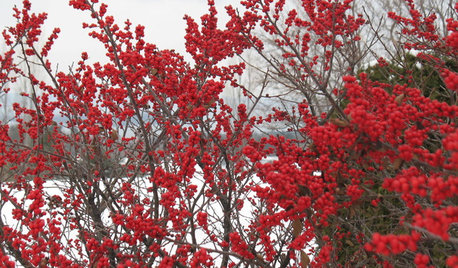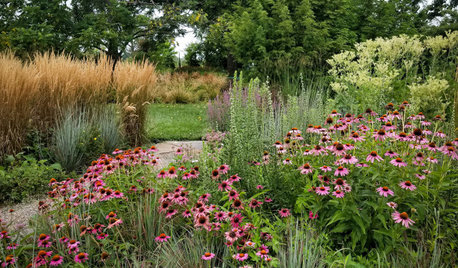Ilex verticillata's berries eaten - question
stimpy926
14 years ago
Related Stories

GARDENING FOR BIRDSFeed the Birds: 6 Plants for Abundant Winter Berries
Be kind to your fair feathered friends during lean food times by planting a shrub or tree loaded with nutritious snacks
Full Story
GARDENING GUIDES6 Rockin’ Red Plants for Winter Gardens
Use the bright berries or branches of these cold-climate favorites for outdoor garden interest or container arrangements anywhere
Full Story
GARDENING GUIDES8 Native Shrubs for Year-Round Bird Feeding
It’s not just about berries. These plants provide insects for birds and seasonal interest for gardeners
Full Story
GARDENING GUIDESTop 12 Summer-Blooming Perennials for Deer-Resistant Drama
Can you have garden color, fragrance and exciting foliage with hungry deer afoot? These beauties say yes
Full Story
FALL GARDENING20 Favorite Flowers for the Fall Landscape
Vivid blooms and striking shapes make these annuals and perennials a delight in autumn gardens
Full StoryMore Discussions






stimpy926Original Author
cjc45
Related Professionals
Allen Landscape Architects & Landscape Designers · Ballwin Landscape Architects & Landscape Designers · Franconia Landscape Architects & Landscape Designers · Glen Ellyn Landscape Architects & Landscape Designers · Leawood Landscape Architects & Landscape Designers · South Elgin Landscape Architects & Landscape Designers · Harvey Landscape Architects & Landscape Designers · Fort Myers Landscape Contractors · Gaithersburg Landscape Contractors · Mahwah Landscape Contractors · Ponte Vedra Beach Landscape Contractors · Riverhead Landscape Contractors · Fort Myers Driveway Installation & Maintenance · South Riding Swimming Pool Builders · Summerlin South Swimming Pool Buildersstimpy926Original Author
User
stimpy926Original Author
User
stimpy926Original Author
User
stimpy926Original Author
User
naturesurrounds